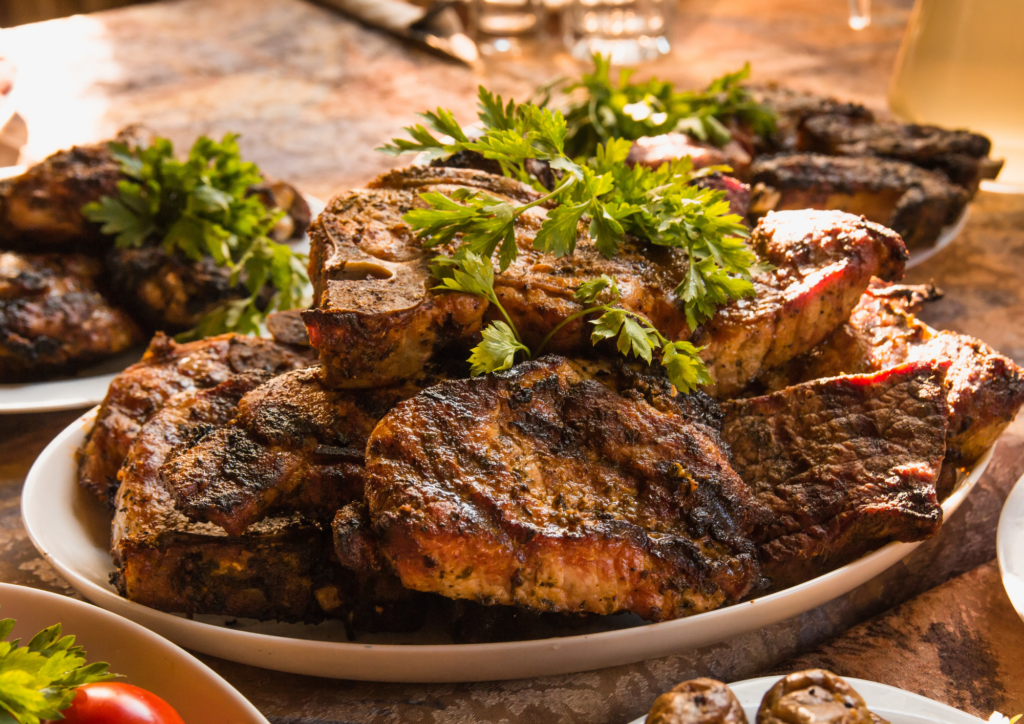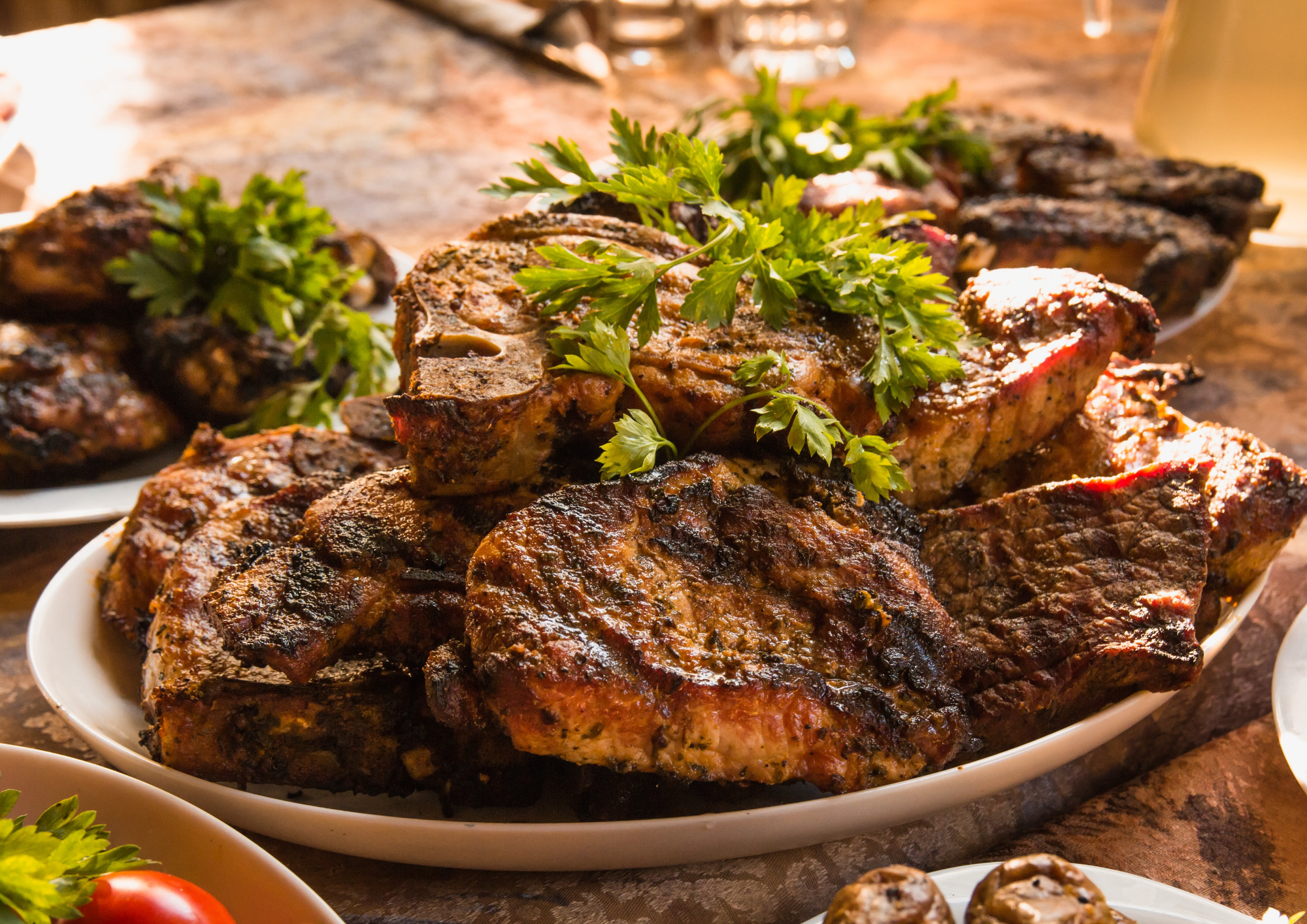Donald Trump built his reputation on bold branding, flashy ventures, and a relentless push to position his name as a symbol of luxury. He attached the Trump brand to real estate towers, casinos, hotels, golf courses, and even bottled water. In 2007, he took another big swing: Trump Steaks. Marketed as “the world’s greatest steaks,” the brand promised the ultimate in premium beef. Trump rolled out the venture with dramatic fanfare, glossy advertising, and his trademark confidence.
But the brand flopped. Within just two months, retailers pulled Trump Steaks from their shelves. Customers didn’t bite. Media outlets mocked the idea of a luxury beef brand tied to a business mogul better known for skyscrapers than cattle ranches.
Trump Steaks failed because of mismatched branding, overpriced products, confusing distribution, poor timing, and a lack of credibility. Let’s break down exactly why this ambitious experiment never sizzled.
The Origin Story: Trump Meets Steak
In 2007, Donald Trump partnered with Buckhead Beef, a supplier known for high-quality cuts. Trump wanted to slap his name on the steaks and market them as the best in the world. He didn’t design farms, raise cattle, or handle meat processing. He played the role of celebrity endorser and brand frontman.
Trump unveiled the brand during an episode of The Apprentice. Contestants marketed the steaks, and Trump used the platform to launch the product nationally. He secured distribution through The Sharper Image, a retailer famous for quirky electronics and novelty items. Customers could also buy Trump Steaks online through QVC and a dedicated website.
At first glance, the formula looked strong: celebrity branding, a premium product, and high-profile distribution. But the cracks showed immediately.
The Price Tag Problem
Trump Steaks carried shocking price tags. A “Trump Steakhouse Collection” cost $999. It included 24 steaks of various cuts — strip steaks, rib-eyes, and filets. Another package sold for $199 and offered just two bone-in rib-eyes and two filet mignons.
Customers balked. Even premium butchers and online meat suppliers charged far less for similar quality. Consumers asked why they should pay hundreds of dollars more just because Trump’s name sat on the label.
Trump marketed the product as luxury, but buyers of luxury food expect either heritage, exclusivity, or a trusted chef’s endorsement. Trump offered none of these. His sales pitch focused on himself, not the actual beef. For meat lovers, the value never justified the price.
The Sharper Image Misstep
Trump chose The Sharper Image as his main retail partner. This decision baffled industry experts. The Sharper Image sold massage chairs, air purifiers, and quirky gadgets. Customers didn’t walk into its stores looking for raw meat.
Sharper Image’s CEO later admitted the partnership failed almost immediately. Shoppers laughed at the idea of buying steaks next to electric foot massagers. Trump insisted on a luxury angle, but luxury food products thrive in gourmet shops, butcher boutiques, or upscale grocery chains. The Sharper Image lacked the credibility and infrastructure to handle premium food retail.
The distribution channel killed impulse buying. Customers had to order frozen meat shipped in bulk, which felt inconvenient and expensive. No matter how much Trump hyped the product, the retail environment screamed “novelty” instead of “luxury.”
Branding Over Substance
Trump branded the steaks with the same style he used for hotels and casinos: bold gold lettering, dramatic advertisements, and over-the-top claims.
He declared:
- “When it comes to great steaks, I’ve just raised the stakes.”
- “Trump Steaks are the world’s greatest steaks.”
The branding leaned on hyperbole. But unlike real estate or casinos, where Trump could dazzle with marble lobbies and towering architecture, meat demanded taste, consistency, and culinary credibility.
Food buyers trust ranchers, chefs, and heritage producers. Trump had none of that. He never presented evidence of superior sourcing. He never showcased ranch partnerships. He didn’t emphasize sustainability or unique feeding practices. He simply repeated the claim that Trump Steaks were the best.
Without credibility in the food industry, his pitch sounded hollow. Customers didn’t trust the brand promise.
Confusing Target Market
Trump marketed the steaks as a gift item for executives and professionals. Ads positioned them as the ultimate power present — something you’d send a client to impress them.
But the audience didn’t respond. Corporate clients rarely spend $1,000 on steak assortments. And consumers who buy expensive steaks often prefer to choose cuts at specialty butcher shops, not order them online from a celebrity brand.
The product sat awkwardly between markets. It didn’t appeal to everyday buyers, and it didn’t attract true luxury food consumers either. The unclear audience left the brand adrift.
Timing Issues
Trump launched the brand in 2007. Within a year, the global financial crisis hit. Americans cut luxury spending, including expensive food splurges. Even wealthy buyers pulled back on extravagance.
At the same time, competitors like Omaha Steaks offered more affordable and established options. Consumers familiar with Omaha trusted its long history and wide distribution. Trump Steaks looked like an untested newcomer with inflated pricing.
The timing doomed the venture. Trump entered a shrinking luxury food market without credibility or competitive pricing.
Marketing That Mocked Itself
Trump’s marketing style often leaned into showmanship. But with Trump Steaks, the spectacle backfired.
Commercials showed Trump declaring his steaks the best in the world, without proof. The ads featured dramatic music and glossy shots of sizzling cuts, but no meaningful story about the product.
Critics mocked the campaign. Late-night hosts joked about the absurdity of buying $1,000 steaks from a man who built casinos. Even Trump’s famous catchphrases — “only the best” — rang hollow when applied to frozen meat.
The marketing failed to highlight quality. It highlighted Trump’s ego.
The Product Experience
Customers who tried Trump Steaks didn’t rave about them. Some reviewers called them decent, but few claimed they justified the price. Many noted that you could buy equal or better quality from established butchers for half the cost.
The product didn’t deliver a wow factor. When customers pay luxury prices, they expect an extraordinary sensory experience. Trump Steaks tasted ordinary. Without an exceptional product, the brand couldn’t survive.
Why the Brand Never Sizzled: Key Lessons
Trump Steaks collapsed within two months. Retailers dropped it. The website went dark. The steaks became a cultural punchline.
The failure offers clear lessons:
- Wrong retail partner – Selling raw meat at The Sharper Image made no sense.
- Overpriced product – The prices alienated buyers without delivering superior quality.
- Lack of credibility – Trump lacked food industry authority and offered no proof of unique sourcing.
- Confused target market – Neither luxury consumers nor everyday buyers felt attracted.
- Poor timing – The financial crisis crushed demand for overpriced indulgences.
- Showy marketing without substance – Flash couldn’t cover weak value.
The Afterlife of Trump Steaks
Even after the collapse, Trump occasionally referenced Trump Steaks in speeches and interviews. In 2016, during his presidential campaign, he displayed Trump Steaks alongside Trump Wine and Trump Water at a press conference. But by then, the steaks no longer existed as a real business. They symbolized his branding approach more than an actual product.
Today, Trump Steaks lives on as a case study in overreaching brand extensions. Business schools cite it as an example of how celebrity names don’t guarantee success.

Broader Pattern: Trump and Brand Extensions
Trump Steaks wasn’t the only failed Trump-branded product. Others included:
- Trump Vodka
- Trump University
- Trump Magazine
- Trump Mortgage
The failures reveal a pattern: Trump often extended his brand into industries where he lacked expertise. He relied on the power of his name to generate buzz, but without delivering real value, the products fizzled.
His successful ventures, by contrast, typically involved real estate or licensing deals where he had infrastructure and industry connections. When Trump stuck to his strengths, he won. When he chased lifestyle products, he often lost.
What Could Have Worked
If Trump had taken a different approach, Trump Steaks might have survived. A better strategy would have included:
- Partnering with respected chefs or culinary influencers to endorse the product.
- Selling through luxury grocery stores or high-end butcher shops instead of gadget retailers.
- Offering smaller, more affordable packages to encourage first-time buyers.
- Highlighting unique sourcing, sustainable farming, or heritage ranch partnerships.
- Building a narrative around quality and taste instead of relying solely on Trump’s name.
By grounding the brand in food culture, not personal branding, the steaks might have earned credibility.
Conclusion: Branding Alone Doesn’t Feed a Business
Trump Steaks failed because branding alone can’t replace substance. Customers want value, authenticity, and credibility, especially when buying luxury food. Trump sold hype, not heritage. He chose the wrong retail partner, set unrealistic prices, and ignored the expectations of true meat enthusiasts.
The story of Trump Steaks underscores a timeless truth: successful branding must rest on real product quality and smart market positioning. No amount of celebrity endorsement can mask a poor fit between product, price, and consumer expectations.
Trump positioned his steaks as “the world’s greatest.” But when the sizzle hit the pan, the brand never delivered. Instead of a luxury empire built on beef, Trump Steaks became a punchline in the long, flashy history of celebrity branding misfires.
Also Read – Why Kanye West’s Pastelle Never Took Off Despite the Hype?
